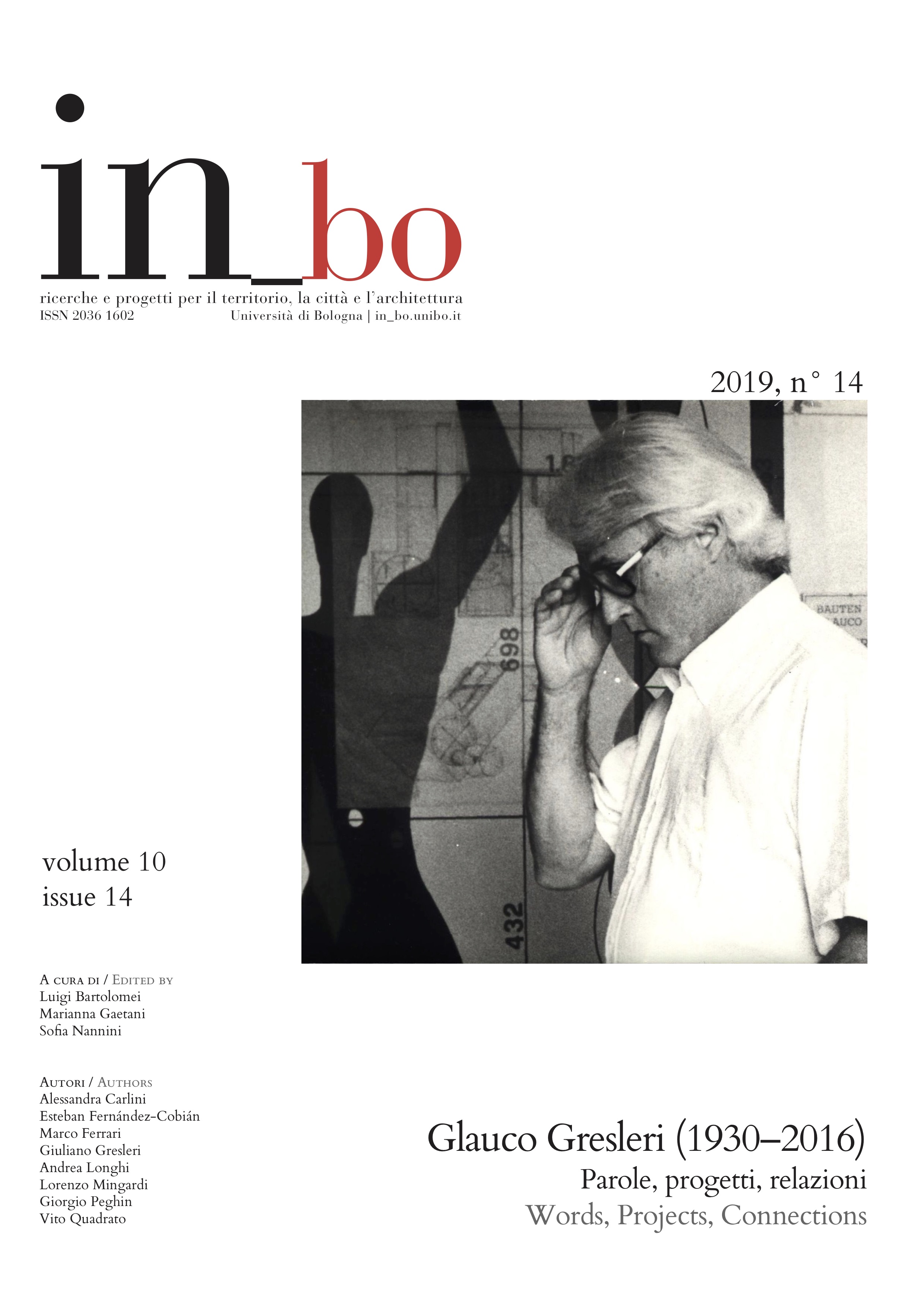Glauco Gresleri and the Architectural Education
DOI:
https://doi.org/10.6092/issn.2036-1602/8907Keywords:
architecture, education, JOURNAL, PARAMETRO, GRESLERIAbstract
The figure of Glauco Gresleri goes beyond his professional works, as he particularly expressed himself in the intense and continuous commitment to the architectural education. This was achieved through different means, not only those typical of the academic context, in a continuous verification of the theoretical and practical assumptions. These were filtered through the coordination and direction of the main journals that he co-founded, Chiesa e Quartiere and Parametro, in which the thematic reflection and critical analysis were always oriented to the transmission of knowledge and content. This knowledge was never dogmatic: on the contrary, it was concerned with civil confrontation between different ideas – in other words, it aimed at the education of democratic citizens. In his informative and professional work, there was no propensity to pursue ephemeral themes. This was also due to the awareness of the operational limitations that a superficial glance at the contemporaneity would have provoked, with the weakening, therefore, of the pedagogical function of architecture. Thus, both in his writings and in his building experience, his testimony finds the ideal place in which to express and offer his thoughts. Such ideas are a contribution to an architecture of substance and criticism towards a formalism not supported by a clear and coherent economic, technical, social and cultural motivation. For Gresleri, the education of architecture has been the most natural and direct way to share his civil and religious passions, the true meaning of a profession and the constant and never renouncing commitment to the progressive improvement of the community and its territory.
Downloads
Published
How to Cite
Issue
Section
License
Copyright (c) 2019 Giorgio Mario Peghin
Copyrights and publishing rights of all the texts on this journal belong to the respective authors without restrictions.
This journal is licensed under a Creative Commons Attribution-NonCommercial 4.0 International License (full legal code).
See also our Open Access Policy.
Metadata
All the metadata of the published material is released in the public domain and may be used by anyone free of charge. This includes references.
Metadata — including references — may be re-used in any medium without prior permission for both not-for-profit and for-profit purposes. We kindly ask users to provide a link to the original metadata record.







